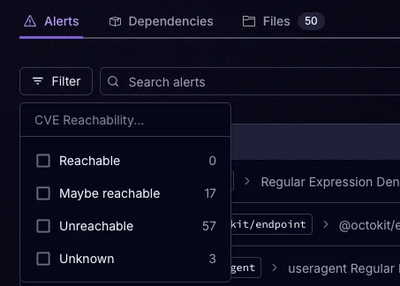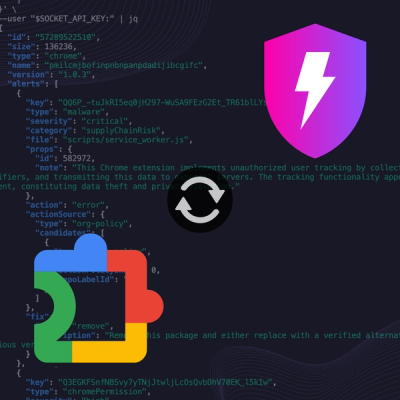
Product
Introducing Rust Support in Socket
Socket now supports Rust and Cargo, offering package search for all users and experimental SBOM generation for enterprise projects.
pixi.js-legacy
Advanced tools
The HTML5 Creation Engine: Create beautiful digital content with the fastest, most flexible 2D WebGL renderer.
Supply Chain Security
Vulnerability
Quality
Maintenance
License
Network access
Supply chain riskThis module accesses the network.
Found 1 instance in 1 package
Socket optimized override available

The aim of this project is to provide a fast lightweight 2D library that works across all devices. The PixiJS renderer allows everyone to enjoy the power of hardware acceleration without prior knowledge of WebGL. Also, it's fast. Really fast.
We are now a part of the Open Collective and with your support you can help us make PixiJS even better. To make a donation, simply click the button below and we'll love you forever!
This package is the same as pixi.js, but provides fallback support for browsers that do not support WebGL or more modern JavaScript features.
PixiJS can be installed with npm to integrate with Webpack, Browserify, Rollup, Electron, NW.js or other module backed environments.
npm install pixi.js-legacy
There is no default export. The correct way to import PixiJS is:
import * as PIXI from 'pixi.js-legacy';
Via jsDelivr:
<script src="https://cdn.jsdelivr.net/npm/pixi.js-legacy@7.x/dist/pixi-legacy.min.js"></script>
Or via unpkg:
<script src="https://unpkg.com/pixi.js-legacy@7.x/dist/pixi-legacy.min.js"></script>
import { Application, Assets, Sprite } from 'pixi.js-legacy';
// The application will create a renderer using WebGL, if possible,
// with a fallback to a canvas render. It will also setup the ticker
// and the root stage PIXI.Container
const app = new Application();
// The application will create a canvas element for you that you
// can then insert into the DOM
document.body.appendChild(app.view);
// load the texture we need
const texture = await Assets.load('bunny.png');
// This creates a texture from a 'bunny.png' image
const bunny = new Sprite(texture);
// Setup the position of the bunny
bunny.x = app.renderer.width / 2;
bunny.y = app.renderer.height / 2;
// Rotate around the center
bunny.anchor.x = 0.5;
bunny.anchor.y = 0.5;
// Add the bunny to the scene we are building
app.stage.addChild(bunny);
// Listen for frame updates
app.ticker.add(() => {
// each frame we spin the bunny around a bit
bunny.rotation += 0.01;
});
This content is released under the (http://opensource.org/licenses/MIT) MIT License.
FAQs
The HTML5 Creation Engine: Create beautiful digital content with the fastest, most flexible 2D WebGL renderer.
The npm package pixi.js-legacy receives a total of 23,681 weekly downloads. As such, pixi.js-legacy popularity was classified as popular.
We found that pixi.js-legacy demonstrated a healthy version release cadence and project activity because the last version was released less than a year ago. It has 1 open source maintainer collaborating on the project.
Did you know?

Socket for GitHub automatically highlights issues in each pull request and monitors the health of all your open source dependencies. Discover the contents of your packages and block harmful activity before you install or update your dependencies.

Product
Socket now supports Rust and Cargo, offering package search for all users and experimental SBOM generation for enterprise projects.

Product
Socket’s precomputed reachability slashes false positives by flagging up to 80% of vulnerabilities as irrelevant, with no setup and instant results.

Product
Socket is launching experimental protection for Chrome extensions, scanning for malware and risky permissions to prevent silent supply chain attacks.